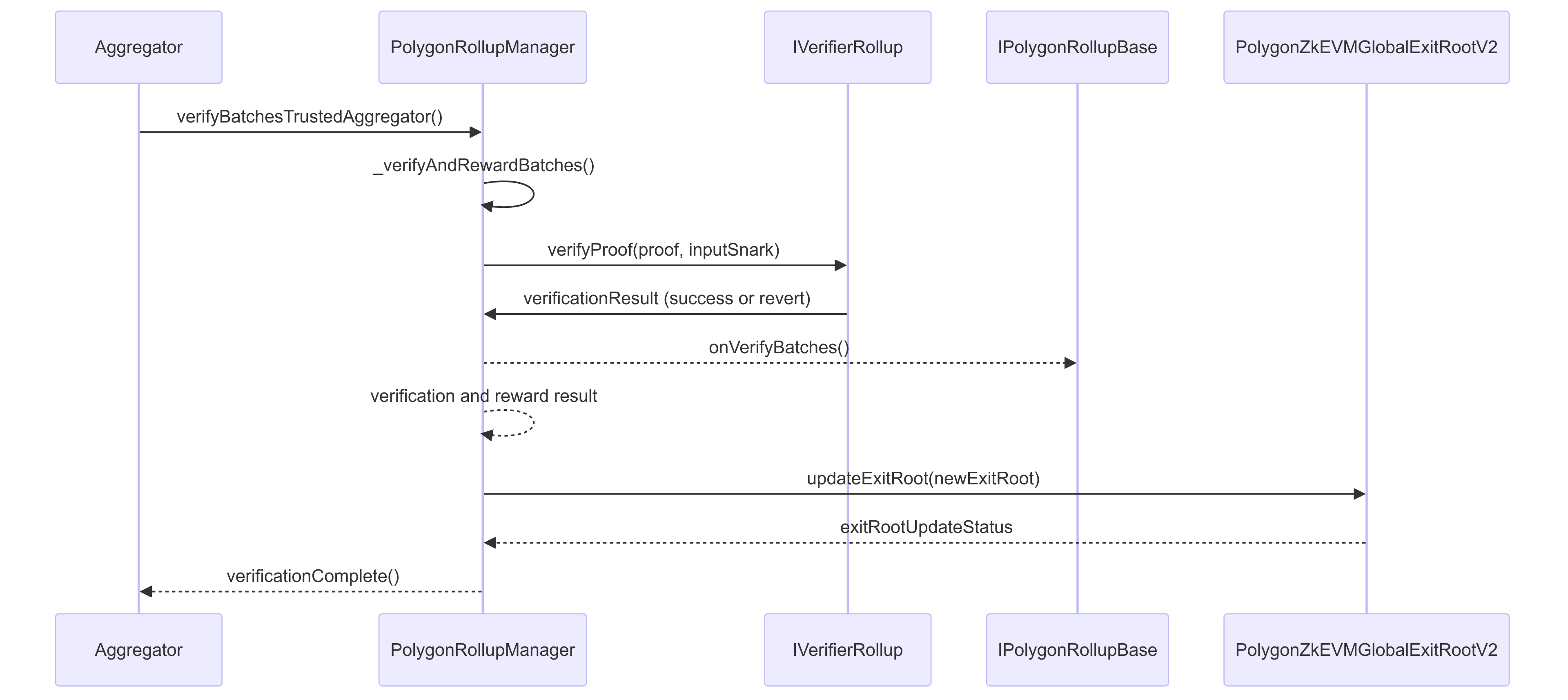Consensus contracts - verification
Transactions flowing through the system reach the smart contract environment after one of two contract call use-cases:
- Sequence batches requests coming from the sequencer component in the node.
- Verifying batches requests coming from the aggregator component in the node.
This section focuses on the verification workflow.
The sequence diagram below shows the verification workflow for rollup stacks and/or the AggLayer calling the verifyBatchesTrustedAggregator(...) function on the rollup manager.

verifyBatchesTrustedAggregator()¶
The verifyBatchesTrustedAggregator() function is called on the PolygonRollupManager contract:
verifyBatchesTrustedAggregator(rollupID, pendingStateNum, initNumBatch,
finalNewBatch, newLocalExitRoot, newStateRoot, beneficiary, proof)
The zkEVM node aggregator, or the AggLayer, calls the verifyBatchesTrustedAggregator function on the PolygonRollupManager.sol contract.
The function creates a rollup data storage object with the data provided by the caller, which it first verifies by sending it to the helper function _verifyAndRewardBatches.
This internal function calculates the inputSnark bytes value, which is a (SHA256 % "RFIELD") calculation on the input data, and uses this value to verify the proof by calling rollup.verifier.verifyProof(proof, [inputSnark]) on an IVerifierRollup interface implementation.
Note
Using a verifier variable on the rollup object means the verifier implementation can be customized in the future.
Next, in the _verifyAndRewardBatches helper function, the code reverts if the proof does not verify successfully. Otherwise, the code pays POL rewards to the beneficiary.
The function then updates the state and calls rollup.rollupContract.onVerifyBatches(...), which is a callback into the rollup consensus contract, allowing for customizable behavior. onVerifyBatches(...) takes the new state root and final batch, and emits a VerifyBatches(...) event.
The command flow returns to the verifyBatchesTrustedAggregator function which consolidates and updates the state with the newStateRoot and the new localExitRoot and calls the updateExitRoot(...) function on the GlobalExitRootManager contract passing the rollup’s updated exit root.